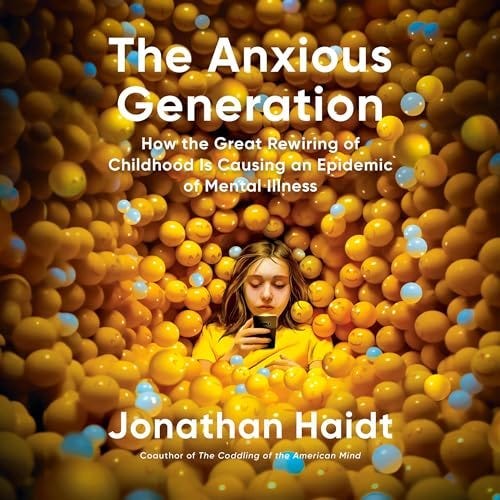Reading Newsletter #15: The SNARF manifesto, Stoner's life, and the 'Anxious Generation
Things that made me sit and pay attention.

I learned a new word this week: SNARF. Okay, it’s not a word but an acronym for Stakes, Novelty, Anger, Retention, and Fear–or SNARF. It is content designed to drive you to share a shocking video or photo on social networks and to click on content because it scares or angers you.
SNARF is content favored by AI or “algorithms” that run on platforms made by Meta and ByteDance, so you keep coming back for more. SNARF drives engagement and spells $$$ for platform owners.
Jonah Peretti, co-founder of Buzzfeed and author of a book on how to make content viral on the Internet, wrote a manifesto admitting that social media companies manipulate us into liking, sharing, and even creating content that feeds the “machine.”
In a long manifesto, he admits that much of what we see, read, and view on social media is content that manipulates us, consuming our little attention for more important things.
TL;DR: social media platforms feed is like junk food, so it’s no surprise that some say social media makes us dumb.
Peretti said SNARF content is “familiar,” especially for chronically online users. Because platforms favor SNARF, Peretti wrote content creators are doing the following:
“Exaggerate stakes to make their content urgent and existential.
Manufacture novelty and spin their content as unprecedented and unique.
Manipulate anger to drive engagement via outrage.
Hack retention by withholding information and promising a payoff at the end of a video
Provoke fear to make people focus with urgency on their content.”
Sounds like key marketing strategies used in campaigns or a playbook borrowed from media-savvy politicians.
Because social media platforms thrive on engagement and use our attention as currency, SNARF produces hateful, misleading, fake, or even destructive content. This can reshape politics, culture, and society in the long run.
Sadly, SNARF has also shaped the way journalism is done. Clickbait headlines that drive engagement are favored. Short, snappy TikTok videos are liked more than long investigative reports that serve meaningful and life-changing solutions to perennial problems in society. Photojournalism is getting less love than AI-created imagery because the latter produces engagement that equals profits.
Peretti added:
“If the early internet was serving beer and wine that brought people together, today’s internet is dealing crack and fentanyl that tears people apart. The consumer isn’t winning when they are addicted to a product that makes them unhappy, and when they are spending hours each day using products they would pay money to make disappear.”
There is light at the end of this “funnel.” Studies cited by Peretti showed that people are open to life without TikTok or Facebook. Because of the growing discontent among people about social networks – thanks largely to their toxicity (think X after Elon Musk turned it into his virtual megaphone), there is a movement towards the alternative – an anti-SNARF network that promotes positivity (happiness), authenticity, and truthfulness. TL;DR: a humanized social network that people curate.
“Put simply, we need to inject some truth, joy, creativity, and positive entertainment into the social web so people have better alternatives in the sea of SNARF,” Peretti said. How this will look will remain a big question. However, he has some ideas on how to make it happen, and it starts with the media properties he manages: Buzzfeed, HuffPost, and Tasty.
This is the third book I finished this year. Here’s a snappy review.
Stoner by John Williams (as narrated by Robin Field) is not a story you read—it’s a story that reads you. It starts slowly and ramps up, wrapping itself around your heart and mind with unassuming prose. William “Bill” Stoner is an ordinary man who lives on a farm with his parents. Soon, he stumbled into literature while studying agriculture at a university. He fell in love with it and never let go. He then meets the love of his life, a woman who is as awkward as he is. They decide to get married but discover that his marriage is headed down a cliff even before it starts. They manage to bear a child, Grace, who brings joy into a loveless marriage until his wife leaves them for unknown reasons.
He later started teaching at the same university where he discovered literature. Unfortunately, Stoner finds himself an unlikely enemy personified by an old, crippled professor who hates him for not taking in a student who suffered a similar predicament. Fortunately, his miserable and frustrating life at the university led him to find love again in another woman, a university teacher. But it didn’t last as the relationship slipped through his fingers like rain.
Stoner is a sad tale about a man who suffers a chronic life of frustration, betrayal, heartbreak, and misery. Towards his retirement, he finds redemption: recognition of his “love for teaching” and his unceasing love for his family and wife.
In his last days on earth, he wonders how life would have been if he had been happier. He endured life without reward, fighting for principles only to be relegated to teaching freshmen students about English composition.
This book is the saddest story I’ve read. It is for weary souls who dream silently, fight battles without fanfare, and find meaning in minor things. Reading Stoner reminds us that even the most ordinary lives are vast and roar in their quietness.
This line in the book stayed with me: “He learned that he was not remarkable, that he would not be remembered. Yet it was this very fact that allowed him, finally, to be free.”

This is my fourth book of the year. I picked this title: "The Anxious Generation: How the Great Rewiring of Childhood is Causing an Epidemic of Mental Illness," by Jonathan Haidt with Sean Pratt (Narrator).
It starts with a story of kids wanting to go to Mars, a metaphor for the unique world they are now dealing with, thanks to social media and other technology that is changing how they behave, learn, and even play.
This generation, dubbed Gen Z, consists of kids (pre-adolescent) exposed to technology at a very young age and thrust into dopamine-inducing, disembodied experiences from playing digital games or doing infinite scrolling through social media.
I have only started “reading” this audiobook, which is over 10 hours long. So far, I like it. When I'm done, I will write more about it.




